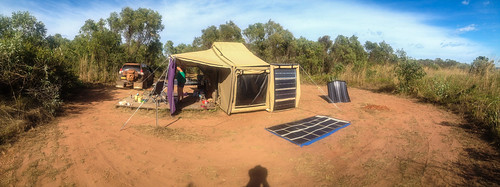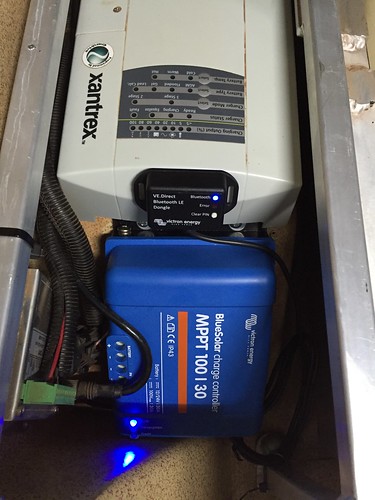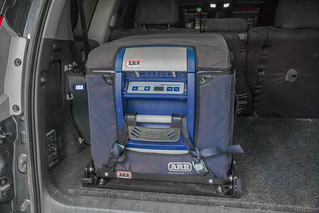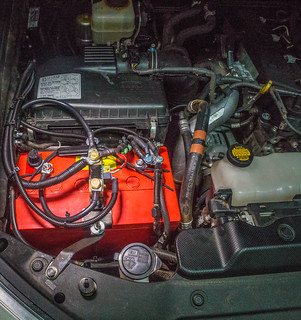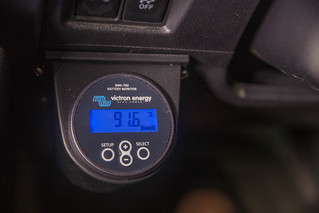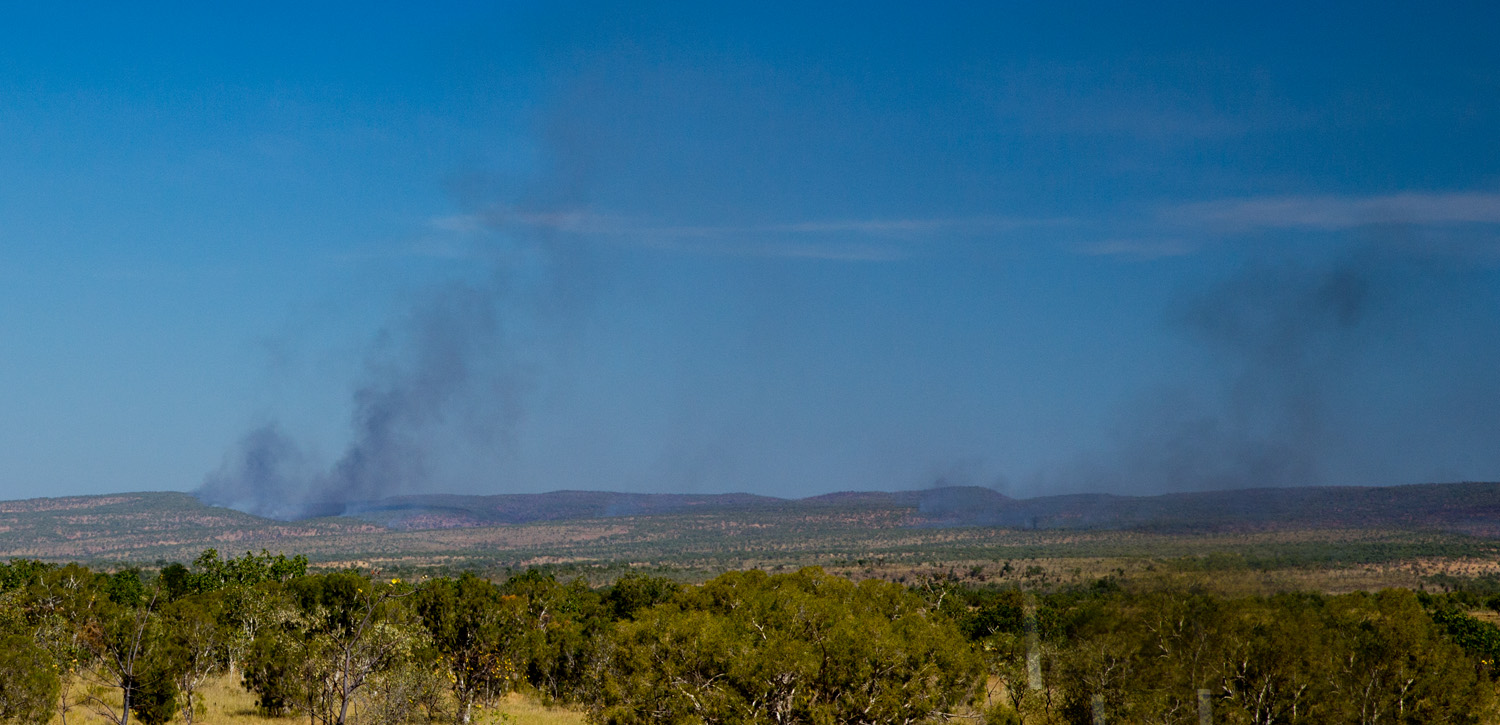In my recent post covering our Lithium battery upgrade I had the following question from Liz, so I thought I would respond in a post rather than reply in the comment section as the answer is rather detailed.
Hi, we are having trouble when camping more than 3 days with our existing 210 amp AGM batteries which came with the trailer. The 100w solar panel KK advised us to get does not produce enough power for us to run the ARB (also came with SE KK) and conservative use of lights and water pump. By the third day our batteries are down to 75% and voltage drops to 11 and this then means our fridge shuts down. We are very confused by conflicting information in our local area and do not know whether to add another battery and upgrade our solar panel or look at a designated battery and box like Arkpak etc to run the fridge? Would you mind telling me what the upgrade to lithium batteries cost you? Also from your post is the DC/DC charger is something else we should consider?
Thank you
Frustrated
Liz"
Hi Liz
Sorry to hear about your issues, one of the great pleasures of camping is being able to run off grid comfortably, and it sounds like something is not right.
First off, 210 Ah AGM is the standard size for most campers trailers these days, AGM’s are heavy so more than this will add quite a bit more weight to the trailer. In many ways getting more solar is a much better option if you camp in sunny locations.
I assume when you say the batteries are down to 75% you mean the reading from the victron capacity meter or is this based on the resting voltage. If your fridge switches off you would be lower than 75% capacity, 11 v is very low for an AGM, completely flat really. ARB fridges will switch off below a set threshold voltage to protect batteries. Either way, your batteries are either not holding charge or as you say you are consuming way more than you produce. Running AGM’s below 50% of charge on a regular basis and worse to flat will ultimately destroy them. Not a bad idea to get them load tested by an electrician, battery World would do this for you.
That aside let’s do some calculations based on 210 AGM, 100W Monocrystalline solar panel and some typical daily consumption. Assuming 12.6v nominal voltage
Battery Capacity
12.6 V x 210 Ah (amp hours) = 2646 WH (watt hours)
You should never go below 50% state of Charge SOC so you really have 1323 Wh
To calculate how much you use in 24 hrs you simply add up the usage of each device over 24 hrs
Fridge
I’ll assume it’s the same as ours an ARB 78L Portable Fridge Freezer fitted by KK
ARB data sheet states the following
1.07 amps/hour - Average power consumption tested at 3°C cabinet temperature, 26°C-31°C ambient temperature range, test duration of 66 hours and supply voltage of 12V DC
This is generous, as in practice we open the fridges and put cool things in, and it’s often hotter than 31 deg especially if the Gullwing lid is down in the sun.
So let’s say 1.5 Ah to be safe
1.5 x 12V x 24 Hrs = 432 WH
Lights
Not sure what LED lights you have but here are some figures based on my experience.
The Kitchen Gullwing LED strip is 10.7W and there are 2 so that is 21.5 W, lets say it’s run them both 3 hrs a day
21.5x3 = 64.5 Wh
KK LED strip is 5.7W so say we also run this for 3 hrs
5.7x3 = 17Wh
Total of 64.5 + 17 = 81.5 Wh
Kitchen Pump
KK documentation rates it at 100W so let's say you run it for 10 min a day
100 x 0.16 = 16.6 Wh
Note this does not include the diesel heater as this consumes quite a lot more power.
Electronics discharge
KK’s consume power even when everything is turned off, I have measured ours
0.3 A/h loss with electronics in trailer
0.3 x 12.6v x 24 hrs = 90.72 Wh
Charge an iPhone
An iPhone 6 from flat is around 11.3 Wh
So lets add it all up
Fridge 432 WH
LED Lights 81.5 Wh
Pump 16.6 Wh
Electronics discharge 90.72 Wh
iPhone charge 11.3 Wh
Total 632.12 Wh
Solar production with a 100W solar panel
Typically as a guide, a 100W Monocrystalline solar panel installed in an unobstructed sunny position in QLD will produce an average daily output of around 420 Wh. Now bear in mind this is ideal, full sun and angled to the sun for 5 hrs or so.
I have tested our 2013 KK folding 120W solar panel which is housed under the front Gullwing and got 570 Wh in one day in Brisbane connected to the MPPT in the KK so 420 for a 100W is about right. But as I said this is a best case scenario.
How long can you go without solar?
Without solar and not going below 50% discharge of your AGMs you would have
1323/632.12 = 2.09 Days
With Solar
You are consuming 632.12 Wh and producing 420 Wh a net outcome of 212.12 Wh
So how long with solar
1323/212.12 = 6.2 Days
Why then can we not go 3 days I hear you say? Without more detail on your setup it’s hard to say, however this is a very rough calculation and in reality solar is always much less than you expect and you consume more than you think, it all adds up :>
In your situation, I would recommend 200-250 W solar capacity.
You may need to increase the capacity of the MPPT charger in the KK, standard is 10A. Once you go above 150 W you should have at least a 20 A. To comply with the National Electric code (NEC), the current rating of the controller for solar charging must be equal or greater than 125% of the solar array’s short current output (Isc). The ISC of a 100W mono solar panel is typically around 6 A.
As for your other question, yes the DC/DC converter in the trailer is a great investment if you have a Anderson plug connected while travelling. You will get much more charge into the batteries than a straight wired connection.
As for Lithium, they are fantastic, light and you can go down to 30%, the cost is the only drawback. I would check your batteries and explore more solar at this stage.
Hope this helps, and happy camping :>





